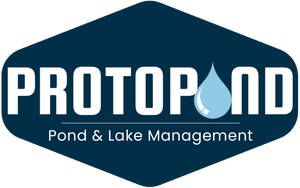Lily pads are a common sight in ponds and lakes, offering beauty and shade. However, their unchecked growth can lead to problems like oxygen depletion and algae blooms, threatening fish and other aquatic life. Managing lily pads without harming fish demands careful selection of methods balancing control with ecosystem health. This guide explains how to remove lily pads safely using multiple strategies, including mechanical, biological, and chemical techniques.
Why Do Lily Pads Become a Problem?
Lily pads may start as a small patch but can quickly spread. Excessive growth causes several challenges:
- Reduced Oxygen Levels: Thick lily pad mats block oxygen exchange between air and water, which can suffocate fish.
- Algae Growth: The stagnant water beneath lily pads encourages algae blooms, disrupting the pond’s ecosystem.
- Fish Health: Fish need open areas to swim freely, but overgrown lily pads limit movement and access to oxygen-rich water.
- Blocked Sunlight: Lily pads block sunlight, affecting the growth of underwater plants that fish depend on for food.
How to Eliminate Lily Pads Mechanically
Mechanical removal offers an effective way to control lily pads without chemicals. Several tools and techniques can help:
- Rakes: Use a pond rake to pull lily pads and their roots from the water.
- Aquatic Weed Cutters: These tools cut lily pad stems beneath the water’s surface, preventing immediate regrowth.
- Mechanical Harvesters: For large ponds, mechanical harvesters clear lily pads more efficiently, but these machines can be costly to rent or purchase.
While mechanical removal is safe for fish, it requires persistence. Roots left behind will lead to regrowth, so regular maintenance is essential.
Biological Methods to Control Lily Pads
Biological control introduces natural predators or organisms to manage lily pad growth. The most common method is adding grass carp, which consume aquatic vegetation, including lily pads. Grass carp can help restore balance to a pond, but their use requires monitoring. Adding too many carp can create new problems by over-consuming other beneficial plants.
Using Pond Dye to Inhibit Lily Pad Growth
Pond dye limits the sunlight needed for lily pads to grow. It is a non-toxic, fish-safe solution that also helps prevent algae blooms. When used correctly, pond dye reduces the growth of unwanted plants while leaving fish unaffected. This method works best when combined with other strategies, as it only slows plant growth rather than eliminating it entirely.
Herbicides for Lily Pads: A Cautious Approach
Fish-safe herbicides are a last-resort option for controlling lily pads. Herbicides like Diquat or Glyphosate can effectively kill lily pads, but they should be applied with caution. Directly spraying herbicides on lily pads reduces the impact on fish and other aquatic life. It’s crucial to follow the manufacturer’s instructions to avoid over-application, which can harm the pond’s ecosystem.
How to Maintain a Balanced Pond After Lily Pad Removal
A healthy pond requires more than just removing lily pads. Maintaining balance involves:
- Monitoring Water Quality: Regularly test oxygen levels and pH to ensure fish remain healthy.
- Removing Debris: Cut and removed lily pads should be taken out of the water to prevent decay, which can lower oxygen levels.
- Introducing Aeration: Aerators or fountains help circulate water, keeping oxygen levels stable and preventing stagnant zones.
- Promoting Native Plants: Encourage native aquatic plants that provide oxygen and nutrients without overwhelming the pond.
Facts and Figures About Lily Pads
|
Category |
Information |
|
Maximum Growth Rate |
Can double in size every 10-14 days |
|
Safe Pond Coverage |
Less than 30% of the pond's surface area |
|
Oxygen Risk Threshold |
Over 70% coverage may lead to oxygen depletion |
|
Grass Carp Consumption |
Eats 30-40% of body weight in plants per day |
|
Herbicide Action Time |
Takes 7-14 days to show visible effects |
|
Recommended Grass Carp |
5-10 carp per acre (depending on regulations) |
FAQs
-
Are lily pads dangerous for fish?
Lily pads are not dangerous in small amounts, but too many can lower oxygen levels and make it hard for fish to move freely. -
Can grass carp completely remove lily pads?
Grass carp help control lily pads, but they might not eliminate them entirely. A balanced approach is needed to maintain pond health. -
How often should I apply pond dye?
Pond dye usually needs to be reapplied every 2-3 months, depending on weather conditions and water flow. -
What is the best time to remove lily pads?
The ideal time to remove lily pads is early in the growing season before they spread too much. -
Are there any drawbacks to using herbicides?
Overuse of herbicides can harm the pond’s ecosystem. Always use fish-safe herbicides and follow instructions carefully.
Conclusion
Controlling lily pads without harming fish requires patience and the right combination of techniques. Mechanical removal is often the safest approach, but biological controls and pond dye can also play essential roles. In severe cases, herbicides offer a solution provided they are used carefully.
By maintaining a regular removal schedule, monitoring water quality, and promoting healthy plant diversity, you can keep your pond clear of lily pads and full of vibrant aquatic life. With a balanced approach, your pond will thrive allowing both fish and plants to coexist in harmony.
Looking for fish-safe herbicides? Check out the Algaecide Collection for effective solutions. These products can help you manage lily pads and algae safely, ensuring your pond stays clear and your fish remain healthy.





